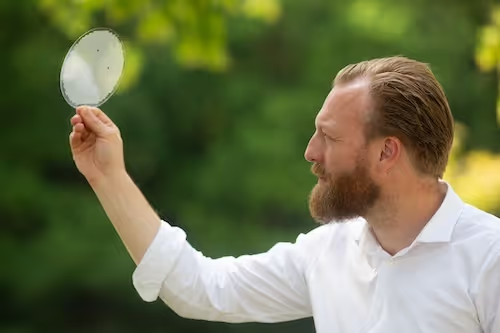Listen now
Since Wired Magazine’s Gary Wolf and Kevin Kelly first coined the term “Quantified Self” in 2007, the path to personal enlightenment through wearable technology has, like its philosophical counterpart, been longer and more arduous than expected. We are still awaiting smart watches to gain mainstream acceptance and other wearables remain marginal devices. Like so much in technology, bold ideas take years, even decades, to fulfill the promise that seems so close yet remains alluringly out of our grasp.
And yet, a grassroots movement is underway that is more pervasive and impactful than initially imagined. Wearable device sales have risen 3.3x in the past two years from 8.3M devices in 2012 to over 27M in 2014, mostly from Fitbit and Jawbone. Simple step counters and sleep monitors have improved rapidly adding heart rate monitors to track workout intensity, quality of sleep and calories burned. Analysts anticipate that annual wearable sales will exceed 100M within the next five years.
“Quantified Self” initially referred to health and wellness. Our penchant for personal tracking now extends far beyond fitness devices and the activities they measure. GoPro captures all your outdoor activity in video, while Instagram shares one’s photos and Foursquare one’s social activities. Strava measures biking performance, Runkeeper running and AllTrails hiking. Zepp analyzes swings for golfers and baseball players. 94Fifty smart sensor basketballs help hoopsters improve their shot. Vivino collects wine ratings and preferences. Sensors are our modern Deus ex machina with our lives becoming ever more calibrated, our every activity monitored.
Where is this penchant for personal measurement taking us? Four trends will predominate: it will become more social, pervasive, predictive and better integrated.
Social: Facebook, Twitter and Instagram have lowered our resistance to sharing personal information in public forums. Increasingly, personal data is public by default. Most services permit both personal and public postings: Pinterest has led the way by allowing users to create either personal or public photo collections. But many services are public by default. Beware apps that request registration using your Facebook account, a leading indicator that data gathered will be public and widely shared. Yet for those willing to brave public scrutiny, peer pressure and gamification of activities can prove a powerful motivator. Lumosity develops games that make training the brain fun. Strava has an elaborate rating system instantly ranking bikers on specific routes relative to other bikers and their previous best times.
Pervasive Computing: Virtually every human activity potentially generates data. Sensors are connecting everyone and everything. As most meaningful activities are measured and monitored, our tolerance data ‘black holes’ are eroding. As we become more attuned to our own bodies, it is natural to be more attentive to other things we care about. Whistle pet care devices monitors your pet’s activity, health and location. Nest and Alarm.com are converting millions of houses into smart homes allowing users to monitor and manage their homes from afar. Connected car technology enables owners to drive more safely and intelligently.
Predictive Analytics: Personal tracking technology is currently descriptive summarizing past activity. Next generation technologies will be predictive, identifying potential issues before they arise. Heart rate monitors from Basis and Polar can identify irregularities to predict and prevent heart attacks. Progressive has pioneered usage-based insurance analyzing driver behavior and awarding lower auto insurance premiums to good drivers. Zubie analyzes car usage patterns to predict car maintenance requirements and recommend repairs. With more than 50% of pet spending devoted to veterinary care, Whistle is analyzing pet activity to recommend healthier diets and reduce pet health risks.
Integrated: Manufacturers and retailers traditionally have had few ways to effectively engage with their customers. The Internet and mobile have dramatically increased customer interaction. Purpose built sensors serving specific use cases can bring customer engagement to a new level enabling proactive user engagement. Nest is integrating with connected cars to automatically adjust home thermostats when homeowners leave and arrive to conserve energy costs. GM OnStar has more than six million subscribers on its network for automated roadside assistance. iHealth tracks personal health with wireless monitors allowing doctors to do diagnostics and offer health care services remotely.
Ultimately, intelligent sensors will enable pervasive computing and predictive analytics that make us more knowledgeable about who we are and how we engage with the world around us. US Secretary of Defense Donald Rumsfeld posed a framework when commenting on foreign policy in 2002: “But there are also unknown unknowns – the ones we don’t know we don’t know. And if one looks throughout history…, it is the latter category that tend to be the difficult ones.” Science has pushed back the boundaries of the unknown for centuries. Technology is now at the vanguard of pushing back the boundaries still further. Ubiquitous sensors will extend the boundaries of what we know expanding human potential well beyond what we may envision today.
The post Beyond the Quantified Self: Extending Human Potential through Sensor Technologies appeared first on Nokia Growth Partners.

.svg)






.svg)






